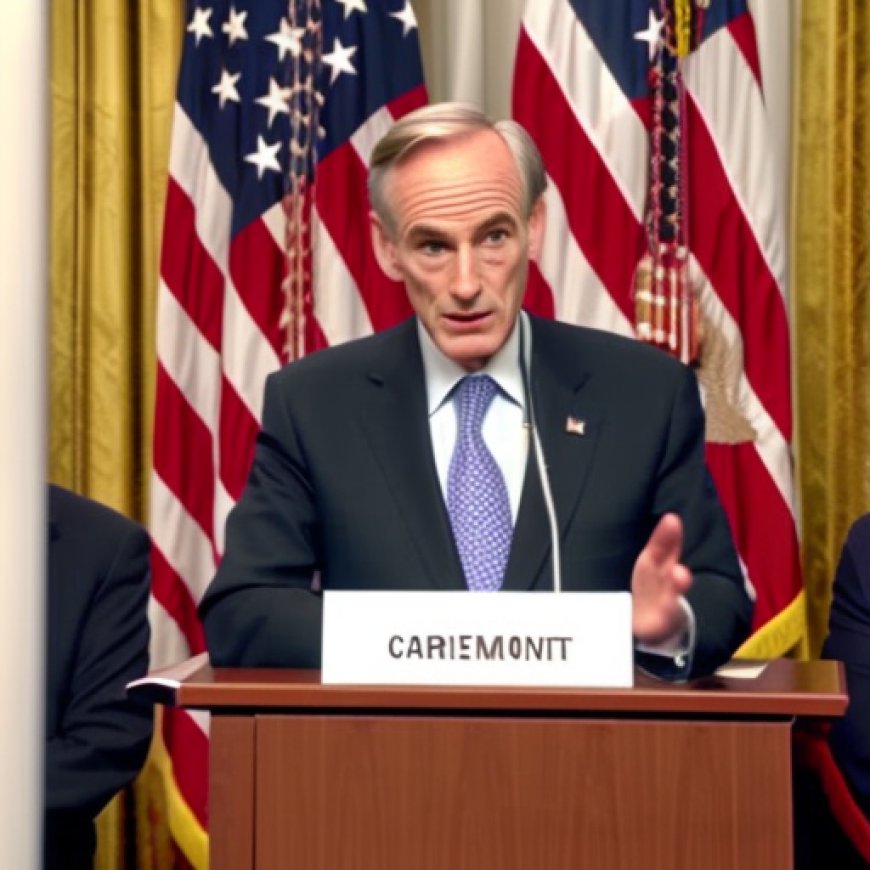Chairman Carper’s Opening Statement: Hearing on Efforts to Improve Reuse and Recycling
Chairman Carper's Opening Statement: Hearing on Efforts to Improve Reuse and Recycling US Senate Committee on Environment and Public Works


Senate Committee Discusses Circular Economy and Waste Management
Introduction
On May 22, 2024, the Senate Environment and Public Works (EPW) Committee held a hearing to discuss the role of federal programs in supporting local waste management efforts towards achieving a circular economy. The hearing was chaired by Senator Tom Carper (D-Del.), who emphasized the importance of recycling and reusing to address environmental crises.
What is a Circular Economy?
The circular economy is a sustainable model of production and consumption that aims to minimize waste by reusing, repairing, and recycling products. This approach is aligned with the Sustainable Development Goals (SDGs), specifically SDG 12 (Responsible Consumption and Production) and SDG 13 (Climate Action).
Benefits of Recycling
- Reduces energy consumption: Recycling aluminum uses 95% less energy than producing it from raw materials.
- Supports economic growth: The EPA’s Recycling Economic Information Report estimated that recycling supports approximately 681,000 domestic jobs.
Current Recycling Efforts in the US
Despite the benefits, the US currently recycles only about 32% of its waste. This presents an opportunity to improve waste management practices and support job creation while protecting the environment.
Federal Support for Local Waste Management
- The Save Our Seas 2.0 Act established the Solid Waste Infrastructure for Recycling (SWIFR) grant program at the EPA.
- The Bipartisan Infrastructure Law allocated $275 million over five years for the SWIFR program and $75 million for Recycling Education and Outreach grants.
Success Stories
SWIFR grants have been used for various projects, such as research on recycled glass in Delaware and building a solar-powered composting facility in Baltimore. Seattle is using its grant to build a warehouse for reusing salvaged lumber, which could create jobs and reduce carbon emissions.
Bipartisan Efforts in the Senate
Senators Carper, Capito, and Boozman have authored bills to improve data collection on recycling and expand infrastructure in rural communities. These bills passed the Senate in March 2024.
Conclusion
The EPW Committee’s hearing highlighted the need for collaboration across government levels, non-profits, and the private sector to create a circular economy that supports sustainable development and job creation.
###
“`html
Sustainable Development Goals (SDGs) Addressed in the Article
The article addresses the following SDGs:
- SDG 8: Decent Work and Economic Growth
- SDG 11: Sustainable Cities and Communities
- SDG 12: Responsible Consumption and Production
- SDG 13: Climate Action
Specific Targets Under the SDGs
Based on the article’s content, the following specific targets can be identified:
- Target 8.4: Improve resource efficiency in consumption and production
- Target 11.6: Reduce the environmental impact of cities
- Target 12.5: Substantially reduce waste generation through prevention, reduction, recycling, and reuse
- Target 13.2: Integrate climate change measures into policies and planning
Indicators Mentioned or Implied in the Article
The article implies the following indicators to measure progress towards the identified targets:
- Indicator for Target 8.4: Number of jobs supported by recycling and reuse activities
- Indicator for Target 11.6: Amount of waste recycled and reused in cities
- Indicator for Target 12.5: Recycling rate of waste materials
- Indicator for Target 13.2: Reduction in greenhouse gas emissions from recycling processes
Table of SDGs, Targets, and Indicators
| SDGs | Targets | Indicators |
|---|---|---|
| SDG 8: Decent Work and Economic Growth | Target 8.4: Improve resource efficiency in consumption and production | Number of jobs supported by recycling and reuse activities |
| SDG 11: Sustainable Cities and Communities | Target 11.6: Reduce the environmental impact of cities | Amount of waste recycled and reused in cities |
| SDG 12: Responsible Consumption and Production | Target 12.5: Substantially reduce waste generation through prevention, reduction, recycling, and reuse | Recycling rate of waste materials |
| SDG 13: Climate Action | Target 13.2: Integrate climate change measures into policies and planning | Reduction in greenhouse gas emissions from recycling processes |
“`
Copyright: Dive into this article, curated with care by SDG Investors Inc. Our advanced AI technology searches through vast amounts of data to spotlight how we are all moving forward with the Sustainable Development Goals. While we own the rights to this content, we invite you to share it to help spread knowledge and spark action on the SDGs.
Fuente: epw.senate.gov

Join us, as fellow seekers of change, on a transformative journey at https://sdgtalks.ai/welcome, where you can become a member and actively contribute to shaping a brighter future.







